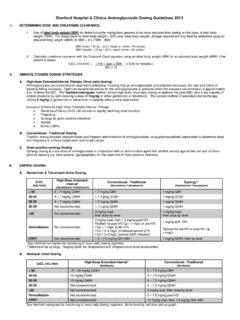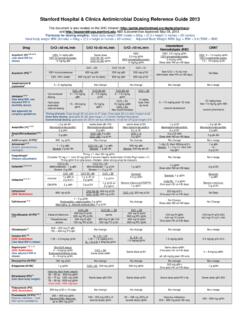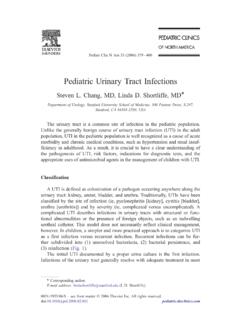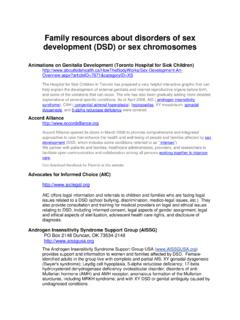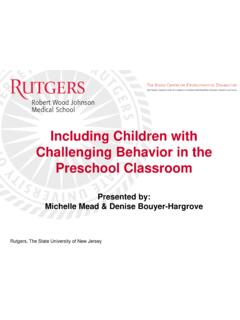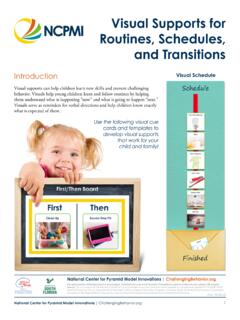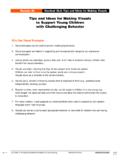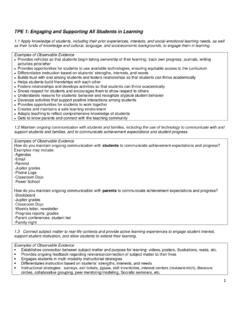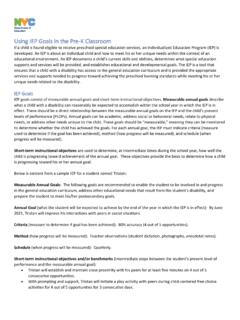Transcription of Autism Spectrum Disorder (DSM 5.0) – Clinician Version
1 Document developed by Developmental-Behavioral Pediatrics Lucile Packard Children's Hospital at Stanford Last update 10/08/13 1 Autism Spectrum Disorder (DSM )1 Clinician Version ASD Diagnosis Meets all 3 Social Communication Deficits criteria and at least 2 Repetitive Behaviors criteria Symptoms are present in early childhood (may not be fully manifest until social demands exceed limited capacity) Symptoms cause significant functional impairment Specify severity level for each deficit area (Social Communication Deficits, Repetitive Behaviors) Note presence or absence of language impairment ( , nonverbal/single word only/phrase speech or full sentences/fluent speech), intellectual impairment ( , DQ/IQ <70) Social Communication Deficits: Persistent deficits in social communication and social interaction across multiple contexts; manifest by all criteria (currently or by history) Criteria Severity Levels v Deficits in social-emotional reciprocity Does not show, bring, or point out objects or activities of interest Has difficulty sharing pleasure, interest, emotions, or affect Has difficulty maintaining back and forth interactions and/or conversations with others (turn-taking) Has one-sided exchanges, talks at rather than with others, has trouble answering open-ended questions Has difficulty initiating a social interaction Has difficulty responding to social overtures of others.
2 Does best when interactions are on his/her terms In older children, has difficulty understanding empathy v Deficits in nonverbal communicative behaviors used for social interaction Has poor eye contact, especially when others request attention; may be better on his/her own terms Has blank facial expression. May direct limited expressions, like smiles, to self Turns away from others during interactions; does not orient body toward others during social exchange Has limited spontaneous social use of gestures ( , limited pointing to express interest) Has poor integration of verbal and nonverbal communication Has poor use of body language Has difficulty understanding or noticing the nonverbal communication of others v Deficits in developing, maintaining, understanding relationships Has difficulty making or keeping friends Has no interest in peers, or avoids peer interactions Has difficulty adjusting behavior to suit different social contexts In toddlers, lacks interest in shared social play ( , peek-a-boo), lacks imaginative play (pretends to talk on phone)
3 In preschoolers, plays alone, has difficulty joining group activities, engages in parallel play when same-aged peers are Level 3 requires very substantial support Severe deficits in verbal and nonverbal social communication skills; severe functional impairment with very limited initiation of social interaction and minimal response to social overtures from others. EX: Person with few words of intelligible speech who rarely initiates social interaction. Responds only to very direct social approach. Level 2 requires substantial support Marked deficits in verbal and nonverbal social communication skills; even with supports in place, functional impairments are apparent; limited initiation of social interaction and reduced or abnormal responses to social overtures from others. EX: Person with simple sentences, social interactions limited to narrow special interests.
4 Level 1 requires support Deficits in social communication skills; with supports in place, functional impairments are less noticeable; difficulty with initiation of social interaction and atypical or unsuccessful responses to social overtures from others. EX: Person with full sentences, to-and-fro conversation with others fails, unsuccessful attempts to make friends. 1 Includes former DSM IV diagnoses of: Autistic Disorder , Asperger s Disorder , Pervasive Developmental Disorder , Not Otherwise Specified (PDD-NOS) Document developed by Developmental-Behavioral Pediatrics Lucile Packard Children's Hospital at Stanford Last update 10/08/13 2 engaging in interactive or make-believe play In older children, does not have an identified friend, chooses solitary activities, has difficulty making new friends, has poor understanding of physical boundaries Repetitive Behaviors: Restricted, repetitive patterns of behavior, interests, or activities.
5 Manifest by at least two of four criteria (currently or by history) Criteria Severity Levels v Stereotyped or repetitive motor movements, use of objects, or speech Pacing or running in circles Body posturing (moving body into unusual, repetitive postures) Hand flapping or finger flicking Spinning or flipping objects Lining up toys Immediate echolalia (parroting) Jargon (speech-like babbling) Repeating lines from favorite videos Scripted or canned use of phrases Pronoun reversal (I/you) v Insistence on sameness, inflexible adherence to routines , or ritualized patterns of verbal or nonverbal behavior Needing to do things in a particular manner, order, or sequence; becoming distraught if order is not followed Extreme distress at small changes Difficulties with transitions Examples of routines : schedules, eating, object placement, dressing, driving routes, greetings Rigid thinking patterns v Highly restricted, fixated interests with abnormal intensity or focus Strong attachments or preoccupations with unusual objects Unusual interests; normal interests that are highly focused or obsessive In younger children, intense interest in certain videos ( , Thomas), in certain toys ( , trains, cars), in numbers and letters, in mechanical objects ( , elevators) In older children, intense interest in certain subjects ( , marine animals, outer space, dinosaurs) v Hyper-or hypo-reactivity to sensory input.
6 Unusual interest in sensory aspects of the environment Interests that seem sensory in nature Excessive smelling or touching of objects visual examination of parts of toys ( car wheels), squinting or peering, fascination with lights or movement Repetitive dropping of objects, or watching objects fall ( , water, sand, balls) Adverse response to specific sounds, textures, tastes, smells Apparent indifference to pain/temperature Level 3 requires very substantial support Extreme difficulty coping with change and great distress changing activities; restricted/repetitive behaviors markedly interfere with functioning in all contexts. Level 2 requires substantial support Difficulty coping with change and distress changing activities; restricted/repetitive behaviors appear frequently enough to be obvious to casual observer and interfere with functioning in several contexts.
7 Level 1 requires support Difficulty switching between activities; inflexible behavior causes interference with functioning in one or more contexts. Organization and planning problems hamper independence.

